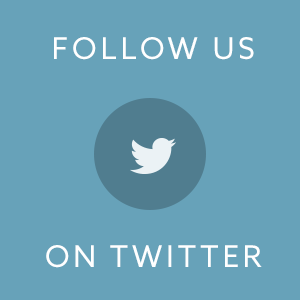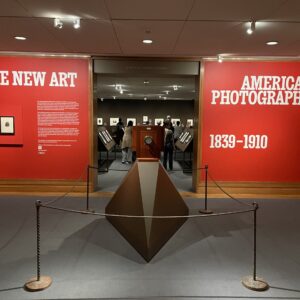JTF (just the facts): A total of 17 color photographs, framed in painted framed and unmatted, and hung against white walls in the main gallery space and the front window.
The following works are included in the show:
- 2 archival pigment prints mounted to Dibond aluminum, 2024, sized 24×18 inches, unique
- 3 archival pigment prints mounted to Dibond aluminum, 2024, sized 25×20 inches (or the reverse), unique
- 1 archival pigment print mounted to Dibond aluminum, 2024, sized 28×20 inches, unique
- 1 archival pigment print mounted to Dibond aluminum, 2024, sized 21×28 inches, unique
- 1 archival pigment print mounted to Dibond aluminum, 2024, sized 30×24 inches, unique
- 1 archival pigment print mounted to Dibond aluminum, 2024, sized 36×27 inches, unique
- 2 archival pigment prints mounted to Dibond aluminum, 2024, sized 40×30 inches, unique
- 2 archival pigment prints mounted to Dibond aluminum, 2024, sized 42×30 inches, unique
- 1 archival pigment print mounted to Dibond aluminum, 2024, sized 48×27 inches, unique
- 3 archival pigment print mounted to Dibond aluminum, 2024, sized 48×34 inches, unique
(Installation shots below.)
Comments/Context: Architectural construction has always stood at the physical center of Erin O’Keefe’s precise photographic art. Trained as an architect (with an MFA in architecture from Columbia), she has built her photographic practice on the abstract possibilities provided by physical still life models constructed in her studio (largely on tabletops) which she then photographs. In this way, O’Keefe is a hybrid builder/photographer – how her models will later be seen by her camera, and particularly how that camera’s vision flattens three dimensional space into a collapsed two dimensional plane, directly influences how the models get crafted, with the end result, when the shutter is finally clicked, often being a shiftingly unstable sense of visual uncertainty.
Across the past decade, O’Keefe has experimented with a wide range of construction materials and configurations, starting with simple flat planes activated by cast light, and then iteratively adding painted boards, rods, dowels, mirrors, sheets of Plexiglas, and painted cardboard cutouts in various combinations, always using the carefully angled application of light (and shadow) to further disorient our perception of the possible space. As seen in gallery shows arriving with regularity almost every two years (in 2015, reviewed here; in 2017, reviewed here; and in 2019, reviewed here), and in additional works popping up in group shows and at art fairs, O’Keefe has meticulously continued to refine and extend her unique approach, slowly solidifying her position on the made-to-be-photographed shortlist.
With the recent closure of Denny Gallery, O’Keefe has found a new gallery partner in Sargent’s Daughters, and with a handsome new photobook on the shelf (How Are Things?, published in 2023 by Distanz here), she seems poised to broaden her artistic reach. The works in this show continue her exploration of the sculptural and spatial potential of painted wood blocks, which she first introduced a few years ago. At the time, the carving of these blocks opened up some new formal options, adding bending, rippling, and curvature to her previously more squared off and angled tool box of hard edged shapes. Now with a few additional years of refinement now under her belt, her resulting photographic compositions have further leveraged those features to become all the more pleasingly confusing.
As a reminder, O’Keefe’s optical effects aren’t created with digital manipulation or other post-production trickiness; her compositions are what-you-see-is-what-you-get straight photographs, with the camera simply recording the scene placed in front of the lens. Of course, the intellectual dissonance of not entirely believing what we are seeing almost inevitably leads us to try and figure out what O’Keefe is doing to confuse us. My experience is that O’Keefe’s works function best if they are observed twice, from two different distances: first, from about 8-10 feet, or perhaps with a little squint of the eyes, from far enough away that her compositions resolve into their intended shapes; and then second, from much closer, not necessarily nose-to-the-frame, but certainly up close, where the detective work of unpacking O’Keefe’s cleverly crafted illusions can take place. It is from this vantage point that we can start to notice the subtle textures (like the rough edge of machined wood), the spatial nuances (like the placement of blocks in front of and behind each other), and the details of colors (especially the spatially overlapped or echoed areas of essentially the same tone), which offer clues to her methods.
The most notable repeated motif in this show is the rippled edge of a block that presents itself like a dangling ribbon. In several instances, O’Keefe has made this thick undulating line the central feature in her composition, with brash 1980’s era colors like electric pink, swimming pool light blue, and metallic silver (in “This Way” set against a classic black-and-white checkerboard backdrop) giving the works a bold graphic edge. When set against a dark background (as in “Tangled Up in Blue”), the blocks seemingly disappear, leaving behind the painted edges to hover in cosmically indeterminate space.
Another motif that O’Keefe introduces here is a curved shape similar to the curly braces found on a computer keyboard. She uses this form, along with other curved and scalloped edges, in setups that are stacked in layered space, creating the appearance of openings and apertures that seem to look inward. She generally uses metallic paint to give these edges a bit of visual pop (as in “Cursive” and “Snake Eyes”), and then backs them with boards and cut throughs that distort our ability to discern the actual space; in a few cases, O’Keefe uses two-toned paint on the edge of the curly brace to further trick our eyes into seeing depth where it isn’t. “Three Sheets” is a composition that treats these ruffled edges with particular visual complexity, mixing an overpainted rectangle with marching curved edges that deliberately confuse our reading of what’s an opening and what isn’t.
Still other works offer alternate visual illusions: stacks of blocks that appear to jut forward into space; black dots that hover, like doorknobs, shadows, or distorted ellipses; and curved integral symbols that seem to stairstep upward. In the end, some of the edges give away the visual magic, but each work feels like a new test, where O’Keefe is challenging herself to give these blocks an intentional hint of deceptive hallucination.
If we start with the premise that many contemporary photographers are working hard to actively reinvent classic photographic genres, it becomes clear that O’Keefe is smartly testing the limits of what a still life can be. In her own way, she has pushed the documentary still life all the way into abstraction, where real life objects are transformed into geometric studies of shape and form. Both visually and conceptually, that’s a wholly clever inversion, which is largely why O’Keefe’s artistic momentum continues to build.
Collector’s POV: The works in this show are priced between $9500 and $19000, based on size. O’Keefe’s photographs have little secondary market history at this point, so gallery retail likely remains the best option for those collectors interested in following up.


















